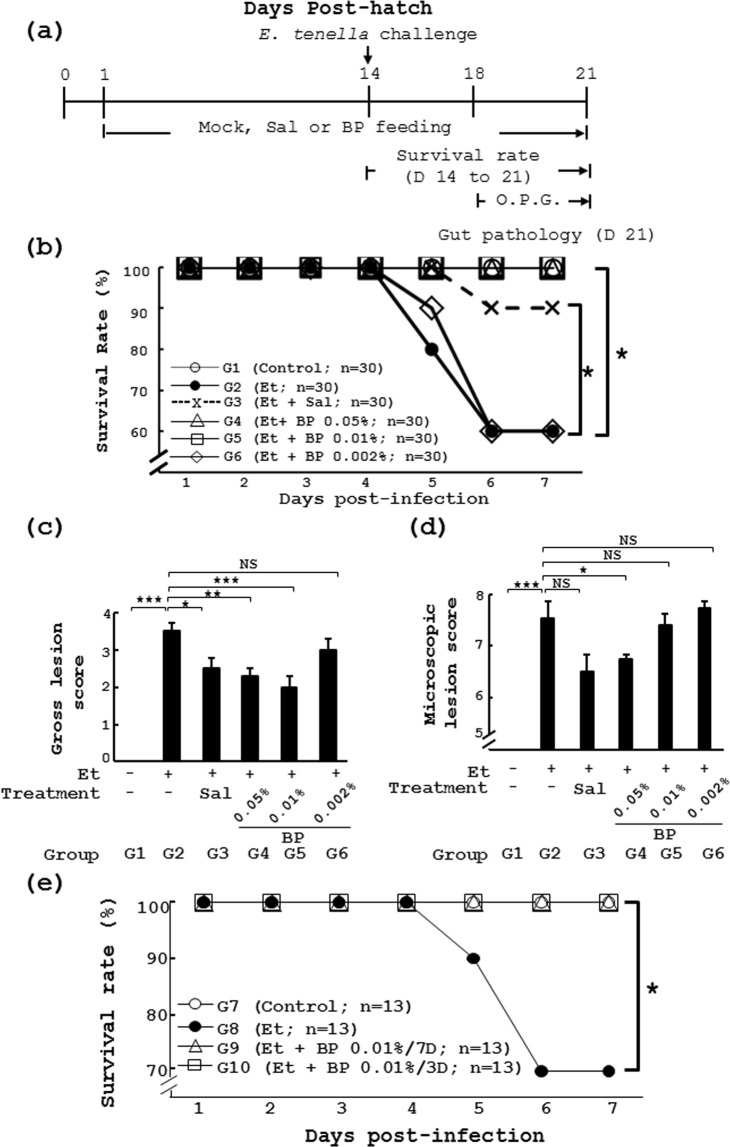Figure 1.
Preventive effect and minimum prophylactic duration of B. pilosa on coccidiosis in chickens. (a) The experimental protocol of the study. (b–d) Effect of B. pilosa on survival rate of chickens given E. tenella challenge. In Experiment 1, 6 groups of chicks had daily access to a diet containing vehicle, salinomycin (Sal) or different doses of B. pilosa (BP 0.05%, BP 0.01% and BP 0.002%). On day 14, chickens were administered with PBS or E. tenella sporulated oocysts (Et) by gavage. Survival rate was measured daily from day 1 to 7 post infection (b). Gross lesion score (c) and microscopic lesion (d) score were obtained from the grading of the cecal lesions of the same chicks as in Figure 1b. (e) In Experiment 2, 4 groups of chickens were used for the study. The chickens in Group 7 were fed with the standard diet from days 1 to 21 with E. tenella infection. Chicks were pre-administered the diet (Et, Group 8), from days 1 to 21, and the diet containing B. pilosa powder (0.01%), from days 11 to 14, for 3 days (Et + BP/3D, Group 9), and, from days 11 to 18, for 7 days (Et + BP/7D, Group 10), respectively. On day 14, the birds were orally infected with PBS or sporulated oocysts of E. tenella. The survival of the chicks was monitored from days 14 to 21. The number (n) of chicks in each group is indicated. P < 0.05 (*) was considered to be statistically significant.

